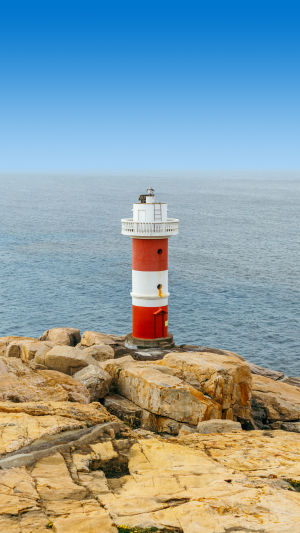Lighthouses, the iconic structures that have stood tall for centuries along coastlines and cliffs, have captivated the human imagination with their mystique and historical significance.
These towering beacons of light have played an essential role in guiding mariners to safety, marking treacherous coastlines, and symbolizing resilience in the face of adversity.
In this article, we will embark on a journey to explore the enchanting world of lighthouses, delving into their fascinating history, architectural marvels, and enduring symbolism.
Historical Significance:
Lighthouses have a rich history dating back thousands of years. The ancient Pharos of Alexandria, one of the Seven Wonders of the Ancient World, is considered the first lighthouse.
Since then, lighthouses have evolved significantly. From simple bonfires and rudimentary structures to complex systems powered by oil, gas, and electricity, these structures have continuously adapted to advancements in technology.
Each lighthouse tells a unique story of human ingenuity, dedication, and the relentless pursuit of maritime safety.
Architectural Marvels:
Lighthouses come in a remarkable variety of architectural styles, each reflecting the era and region in which they were built.
From the striking red and white striped Cape Hatteras Lighthouse in the United States to the picturesque white tower of Fanad Head Lighthouse in Ireland, these structures command attention with their distinctive appearances.
Lighthouses often blend seamlessly with their natural surroundings, harmonizing with the coastal landscapes and becoming a part of the cultural heritage of their respective regions.
Technological Evolution:
The advancement of lighthouse technology has been extraordinary. Traditional open-flame fires have been replaced by sophisticated lighting systems.
Fresnel lenses, invented in the 19th century, revolutionized lighthouse optics by magnifying and focusing light beams, significantly increasing their range and intensity.
In modern times, automated systems and advanced electronics have further improved the efficiency and reliability of lighthouses.
However, even with the advent of GPS and electronic navigation aids, lighthouses continue to serve as indispensable navigational aids, especially in remote areas or during inclement weather.
Symbolism and Romance:
Lighthouses have long held a romantic allure, evoking a sense of adventure, mystery, and isolation. They stand as guardians of the seas, guiding ships through perilous waters, and providing a sense of security to sailors.
These beacons have inspired countless artists, writers, and poets, symbolizing hope, perseverance, and the indomitable human spirit.
They have become icons of strength and resilience, reminding us that even in the darkest of times, there is always a guiding light to lead us home.
Preservation and Tourism:
In recent years, efforts to preserve lighthouses as historical landmarks have gained momentum.
Many decommissioned lighthouses have been restored and transformed into museums, visitor centers, or even cozy bed and breakfasts, offering a unique opportunity to experience their historical charm firsthand.
Visitors can climb spiral staircases, explore exhibits on maritime history, and savor breathtaking panoramic views from the lantern rooms. Lighthouse tourism has become increasingly popular, attracting enthusiasts eager to immerse themselves in the enchanting world of these captivating structures.
Lighthouses, with their timeless allure, continue to inspire awe and fascination. As we navigate through the complexities of the modern world, their symbolic significance remains undiminished.
Lighthouses stand as steadfast reminders of our enduring connection to the sea, our quest for knowledge and safety, and our unwavering spirit in the face of adversity. Let us continue to cherish and protect these magnificent beacons.





